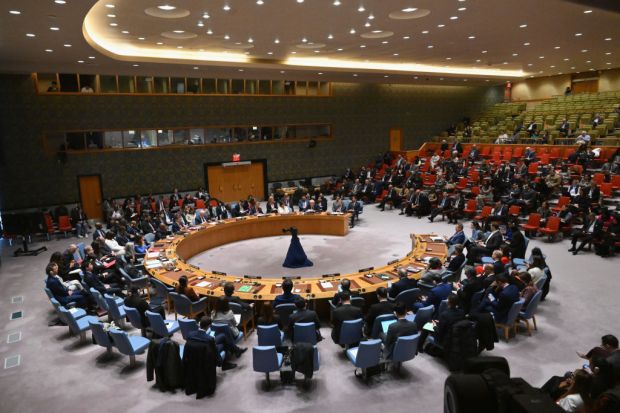Two decades after devolution, the Scottish Parliament’s election system still confuses ordinary voters and seasoned political observers alike. Politicians on both the Unionist and Nationalist sides have capitalised on this complexity, putting forward new parties – most prominently George Galloway’s Alliance for Unity (A4U) and Alex Salmond’s Alba – that aim to game the system and maximise their side’s (on the matter of the constitution) number of MSPs by pulling regional list votes away from the major parties.
But in fact, beneath its byzantine name and workings, Scotland’s modified d’Hondt Additional Member Electoral System translates to straightforward arithmetic, with a clear and inescapable conclusion: Galloway’s A4U gambit is likely to backfire, doing real damage to the Unionist cause. On the other hand, the mathematical structure of Scottish elections means that Alba is much better positioned to succeed, and has the potential to artificially inflate the Nationalist share of MSPs.
The main reason that these parallel ventures have such divergent chances of success is that most Nationalist MSPs are elected with constituency votes, while most Unionist MSPs are elected from list votes. Put simply, this means that the potential upside of manipulating how list votes are allocated is much higher for Nationalists than for Unionists, and the corresponding risks are much lower.
But to understand the situation more deeply, we need a brief detour into how Scottish elections actually work. On 6 May, each Scottish voter will be assigned two votes: a constituency vote and a regional list vote. 73 out of Holyrood’s 129 seats are allocated using the constituency vote, which works along the same lines as the first-past-the-post system used in UK-wide general elections – whichever party wins the most votes in each constituency gains an MSP for that constituency.
Historically, the SNP has virtually swept the board of constituency seats. In 2016, the SNP won 59 out of 73 constituency seats, providing close to the entirety of their Holyrood delegation. Unionist parties tend to do much worse, since the Unionist vote is split between several large, distinct, parties. In 2016, the Scottish Conservatives won seven constituency seats, while Scottish Labour won three and the Scottish Liberal Democrats won four.
This SNP dominance of the constituency seats will almost certainly continue in the 2021 election. Modelled predictions based on recent polling suggest that the SNP will likely win 60 to 70 of the 73 constituency seats.
The regional list vote is intended to compensate for the imbalances in the first-past-the-post constituency system, adding an additional 56 MSPs under a system designed to handicap parties which have already won constituency seats. Specifically, Scotland uses a modified version of the d’Hondt system to allocate these 56 MSPs.
Under the Scottish d’Hondt system, Scotland is divided into eight regions, each of which is given a set of list MSPs to allocate. After the list votes are tallied up, each party’s vote total is divided by the number of constituencies that the party won, plus one, to give a d’Hondt quotient. The party with the highest d’Hondt quotient is given one MSP. Then, the same calculation is repeated, but with one added to the divisor of the party that was just allocated an MSP, meaning its d’Hondt quotient is lowered. This process continues until all MSPs in the region have been allocated.
Generally, parties need around six to seven per cent of the list votes in a region to get at least one MSP from the regional list. If they win fewer votes, their d’Hondt quotient will never be high enough, even as the d’Hondt quotients of the other parties get lowered when they are assigned MSPs.
Any list votes for a party that ends up below this six-seven per cent threshold are effectively wasted. The Scottish Parliament’s Public Information Centre writes:
‘Political parties (or candidates standing as independents) will generally need to win at least six-seven per cent of the [list] vote in a particular regional ballot in order to have a chance of gaining an additional seat.’
Figure one: In the past three Scottish elections, parties have very rarely won list seats with less than six per cent of the regional vote
 Note: Seat Share by Region, Year and Party.
Note: Seat Share by Region, Year and Party.
Almost all Unionist MSPs are currently elected through the regional list, meaning that the list vote is the bulwark for stopping a SNP majority, or at least preventing total Nationalist hegemony in Holyrood. But the list vote system also has a critical vulnerability, which Alba has been designed to exploit: the handicap which lowers the d’Hondt quotients of parties that have already won constituency seats doesn’t apply to parties which are technically distinct, but stand on similar platforms, like Alba and the SNP.
This loophole is what fuels Alba’s hopes of an ‘independence supermajority’. In theory, if every SNP voter instead used their list votes for Alba, the Nationalist bloc would gain an extra 25 Holyrood seats without needing to convert a single new voter. Of course, the bad blood between Salmond and Sturgeon means that this scenario isn’t realistic. But if even a relatively small share of SNP voters lend their list votes to Alba, the results could be disastrous for Unionists.
Figure two: If Alba pulls past six per cent, a ‘Nationalist supermajority’ will be in reach

The most recent Scottish poll, conducted last week by Panelbase for the Sunday Times, puts Alba at six per cent, just high enough to begin boosting the overall number of Nationalist MSPs. Assuming all these Alba voters defected from the SNP, the modelling in figure two shows that this result would generate just one extra ‘free’ Nationalist seat.
If Alba pulls just a slightly higher share of voters from the SNP, its impact begins to accelerate dramatically. At seven per cent, Alba would bring the Nationalist bloc six extra seats without requiring any new Nationalist voters; at 15 per cent, it would pull in nine more seats. Other researchers, including Professor John Curtice and Leonardo Carella, have modelled broadly similar projections, though the exact details are sensitive to assumptions.
There is a huge amount of uncertainty about how well Alba will do in the end. The party was launched just over a week ago, and is still percolating into the public’s political consciousness. Although Alex Salmond is a polarising figure, he maintains a real following among parts of the SNP base.
More importantly, Salmond’s argument is mathematically solid, and may well convince even those who are sceptical of him personally to hold their nose and vote Alba. As Salmond himself recently put it:
‘Arithmetically our argument for the independence supermajority is unassailable. More MSPs supporting independence: what’s not to like?’
Indeed, Salmond’s tactics are also not entirely new. The pro-Independence Scottish Greens tried to play a similar role in 2016, winning just 13,172 constituency votes but 150,426 list votes, enough to provide the critical six list seats that ensured a majority in Holyrood for the Nationalist bloc.
The Alliance 4 Unity assert that this same logic also holds on the Unionist side, and therefore that Unionists should consolidate their list votes behind A4U. But current polling has A4U hovering around four per cent, low enough to mean that A4U would likely win no list seats, wasting the votes of its supporters. Even if A4U does manage to raise its vote share, almost all the list seats that it would displace would be from Unionist parties like the Scottish Conservatives, Scottish Labour, and the Scottish Liberal Democrats, since these parties hold the vast majority of list seats overall.
A4U would have to pull in more than 30 per cent plus of list votes – the clear majority of all pro-UK votes cast – to avoid being a net drag on Unionist representation in Holyrood.
Figure three: Unless A4U manages to increase its vote share almost tenfold, it will be a net negative for the Unionist bloc

After well over a decade of continuous Unionist losses in Holyrood, trying to shake up Scotland’s flawed politics is an understandable and tempting impulse. But good intentions don’t win elections, and the A4U will likely worsen the problems that it aims to solve.
What, then, can voters who wish to protect the Union do amid these unpromising circumstances? Given the flaws and complexities of the Scottish electoral system, they must think carefully and vote tactically on the 6th of May.
This means consolidating pro-UK constituency votes behind whichever Unionist candidate has the best chance of winning in each constituency (which, in fairness, A4U have also suggested as a plank of their strategy), even if that forces some uncomfortable decisions – Conservative supporters voting for a Labour candidate, or vice versa. With their regional list votes, pro-UK voters must focus on parties that have a genuine chance of clearing six-seven per cent and taking a list seat in their region.
To simplify this process, the pro-UK campaign group Scotland in Union has put together a tactical voting guide for the 2021 Scottish Elections. This tool uses polling, modelling, and past election results to suggest how voters in Scotland can best use their vote to protect the Union, based on where they live.
Politics is ultimately a results based affair, where outcomes beat intentions every time. Unionists must be strategic and deliberate as they navigate the complexities of Scotland’s electoral system, and do what they can to lower the chances of another Nationalist majority. Not understanding the system you are operating is one of the key hurdles behind effective new political movements. The Founders of ChangeUK provide a cautionary tale.
<//>
Got something to add? Join the discussion and comment below.
Get 10 issues for just $10
Subscribe to The Spectator Australia today for the next 10 magazine issues, plus full online access, for just $10.
Notes on modelling: Vote Shares taken from Latest Panelbase poll for the Sunday Times. Nationalist/Unionist transfers assumed 'within' block




















Comments
Don't miss out
Join the conversation with other Spectator Australia readers. Subscribe to leave a comment.
SUBSCRIBEAlready a subscriber? Log in